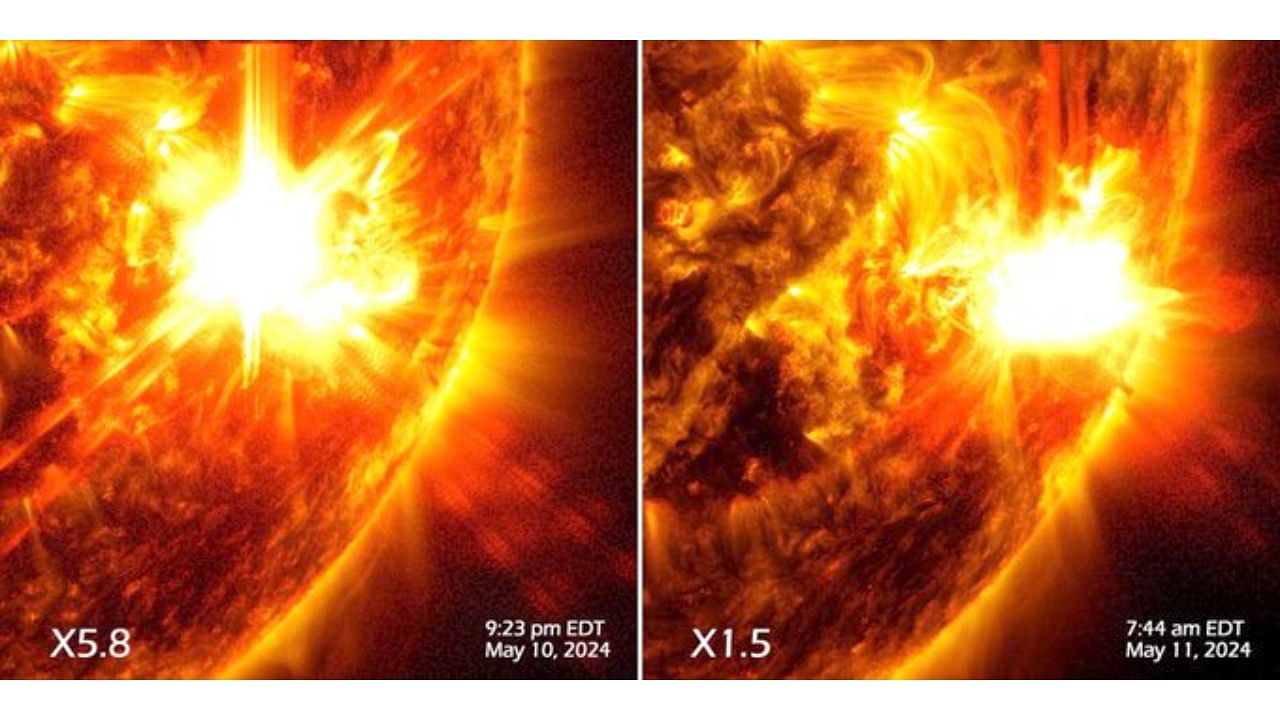
Being powerful bursts of energy and radiation, these sun flares have the capability to impact radio communications, navigation signals along with causing danger to spacecrafts and astronauts in them.
Credit: X/@NASASun
As we have been taught in our early classes at school, the sun is a huge ball of hot gases which creates a magnetic field as it moves.
Almost every 11 years, this magnetic field of the sun undergoes a cycle called the solar cycle. This flipping of the sun's magnetic field leads to switching places of the sun's north and south poles. So, it takes approximately 11 years for the sun to switch its north and south poles again.
These strong magnetic fields of the sun have planet-sized dark detectable regions on the surface of the sun called sunspots.
Now, during the solar cycle, the sun releases flares that can potentially affect life on earth.
Two strong flares emerged from the sun at 9.23 pm on May 10 and at 7.44 am on May 11, respectively.
Being powerful bursts of energy and radiation, these sun flares or other solar eruptions have the capability to impact radio communications, navigation signals along with causing danger to spacecrafts and astronauts in them.
The two flares have been identified as X5.8 and X1.5 flares, respectively from the X-class which is the most powerful. There are other classes, classified according to their strength.
There is an M-class which is 10 times less powerful than the X-class followed by C-class and lastly B-class for flares.
Earlier, two solar flares - an X1.7 flare and an M-class flare - arose from the sunspot region 'AR3664' and our earth happens to be in the firing line of those.
NASA says that solar flares occur when powerful solar magnetic fields which are in and around the sun reconnect.
These flares are released when the magnetic energy which is built inside the solar atmosphere.
NASA also informs that radiation from these solar flares cannot infiltrate in the earth's atmosphere but when super intense and powerful, then they can affect GPS and communication signals.
A powerful flare of the X-class had also emerged on May 2, due to which Australia, Japan, and China experienced shortwave radio blackouts.